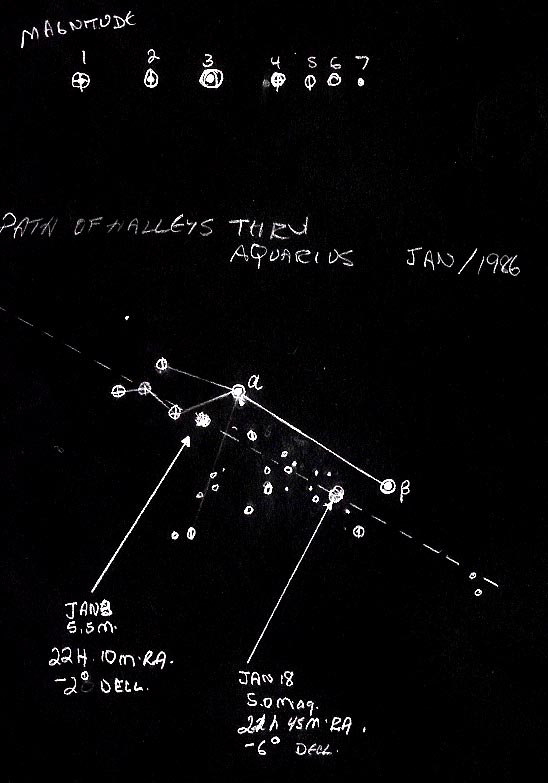
Comet Halley 1986: A Personal Account of its Observation
Comet Halley 1986
Comet Halley 1986: officially designated 1P/Halley, is a short-period comet visible from Earth every 75–79 years. Halley is the only known short-period comet that is regularly visible to the naked eye from Earth, and thus the only naked-eye comet that can appear twice in a human lifetime. It last appeared in the inner parts of the Solar System in 1986 and will next appear in mid-2061.
Thank you for reading this post, don't forget to subscribe!
Halley’s periodic returns to the inner Solar System have been observed and recorded by astronomers around the world since at least 240 BC, but it was not until 1705 that the English astronomer Edmond Halley understood that these appearances were re-appearances of the same comet. As a result of this discovery, the comet is named after Halley.
During its 1986 visit to the inner Solar System, Halley’s Comet became the first comet to be observed in detail by spacecraft, providing the first observational data on the structure of a comet nucleus and the mechanism of coma and tail formation.
These observations supported a number of longstanding hypotheses about comet construction, particularly Fred Whipple’s “dirty snowball” model, which correctly predicted that Halley would be composed of a mixture of volatile ices—such as water, carbon dioxide, and ammonia—and dust. The missions also provided data that substantially reformed and reconfigured these ideas; for instance, it is now understood that the surface of Halley
My Observations
My observation of the Comet Halley 1986, was before I did photography. This is a sketch of what I observed from the notebook I kept.
The Comet was in Aquarius, near the “Water Jar” Asterism, when I observed it in 1986, before it dropped below the horizon and past nearest the Sun.
| Observation Log Information | |
|---|---|
| Log Index: | 1 |
| Session: | 1 |
| Date: | 1986-01-08/18 |
| Equipment: | Binoculars |
| Location: | StrathmoreAB |
Don’t miss the chance to explore Comets’ impressive portfolio. It’s worth checking out!